Growing native wildflowers is an excellent way to provide the right food for pollinating insects, making life better for your local wildlife.
If you haven't got a lot of space, you can grow wildflowers in a container. You'll be able to enjoy a burst of colourful and interesting flowers while watching visiting bees, butterflies and other pollinators.
It's best to start this gardening project in the spring or autumn.
Watch the video above to find out how to grow your pollinator pot. You can find full instructions and tips below.
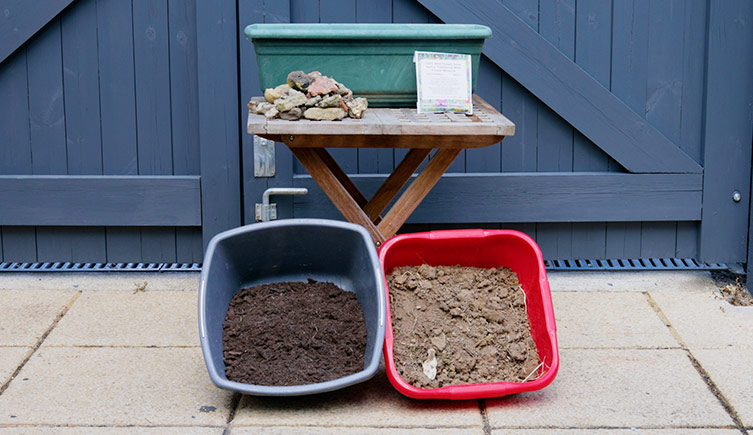
For your pollinator pot you will need:
- a suitable pot or planter
- peat-free compost (peat-free compost will be clearly marked as such)
- garden soil
- rocks and stones
- wildflower seeds (see choosing wildflower seeds for your pot)
1. Preparing your pot
Ensure your pot has good drainage so that the soil doesn't become waterlogged. Check that it has holes in the bottom, then place a layer of rocks and stones in the base.
Mix together equal amounts of soil and compost. This helps ensure the growing medium isn't too rich for the wildflowers, which prefer nutrient-poorer soil.
Fill the pot with your soil/compost mixture, to roughly within 2.5 centimetres of the top.
2. Sowing your seeds
Sprinkle your seeds thinly and evenly on the surface of the soil. Then cover with one centimetre of your soil/compost mix.
Water well, being careful not to disrupt the seeds.
3. Gemination and growth
Place your pot in a sunny spot and leave to grow. Water regularly so the pot doesn’t dry out, but don’t over water!
Your plants will flower at different times, depending on what's in your chosen seed mix. Some plants might not flower until the second year.
4. Maintaining your wildflower pot
Once the flowers have bloomed and faded, leave them to go to seed. You can collect the seeds and use them for another pot. Once everything has flowered, you can cut back the plant growth to around 2.5 centimetres high.
The next year, your plants will flower again. Depending on your seed mix, different species may predominate.
Watch out for any vigorous invasive plants that might crowd out your wildflowers. Weed these out.
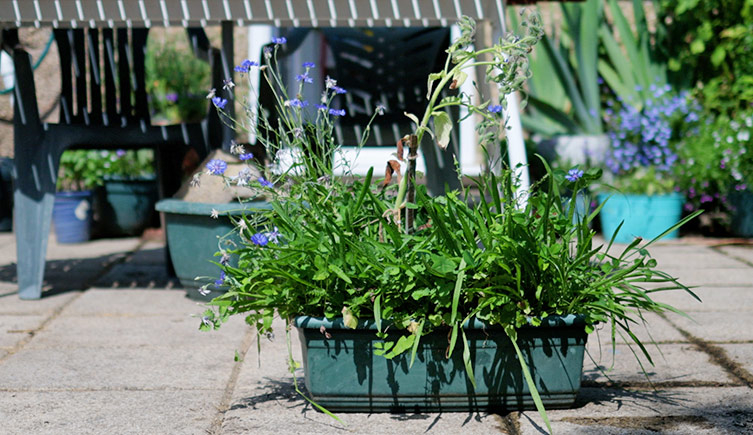
A first-year pot with plants in flower - once everything has flowered, you can cut it back
Choosing wildflower seeds for your pot
When choosing a wildflower mix, look for a supplier that specialises in native British wildflowers, otherwise you may get flowers that are less attractive to local wildlife. Many ‘wildflower’ mixes include non-native species which may look spectacular, but do not provide the same benefit to wildlife.
Wildflower seed mixes have different proportions and types of flowers and grasses, depending on their intended use. For a compact display in a pot, you may prefer a 100% mix of flowers, with no grasses.
Many mixes contain colourful plants, such as poppies and cornflowers, that live at field margins rather than in meadows. These will provide a burst of colour in the first year, but will disappear in later years as other plants assert themselves.
You might want to consider adding two mixes to your pot, one mix of plants that live on the field margins and only grow for a year, as these give vibrant colour in the first year, and one mix that will establish in subsequent years and provide lasting colour and biodiversity. Alternatively, you could re-sow the pot each year, but the soil will need disturbance to encourage plants like poppies to germinate.
Observing what insects visit your pots
If you enjoy watching your plants develop and seeing what insects are attracted, then why not start noting down what you see? It's a great way to feel connected to nature.
Check out our guide to creating a nature journal.
You may even be able to contribute your sightings to UK recording schemes, such as the Garden Butterfly Survey and the UK Pollinator Monitoring Scheme.
If you need help in identifying what you've seen, use the iNaturalist app or contact the Museum's ID team, by email or on their Facebook group.
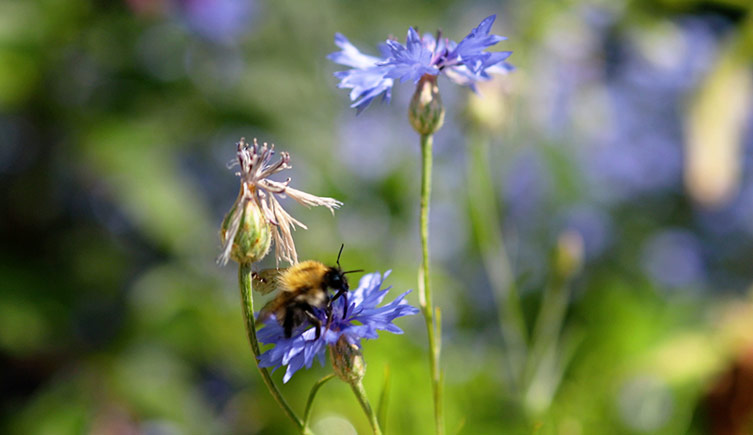
Take an interest in what visits your container – such as this bee inspecting one of the cornflowers
Other garden projects to promote wildlife
If you have a lawn, there are a range of ways you can improve it for wildlife, from simply mowing less frequently to installing a wildflower meadow. Check out our article on how to grow a lawn that's better for wildlife.
If you enjoy watching butterflies, there are various plants you can grow to help feed both caterpillars and butterflies. See our gardener's guide to butterfly-friendly plants.

British wildlife
Find out about the plants and animals that make the UK home.

Do your bit for nature
Biodiversity is connected to almost every aspect of our lives, but it needs our help. Small actions can make a big difference.
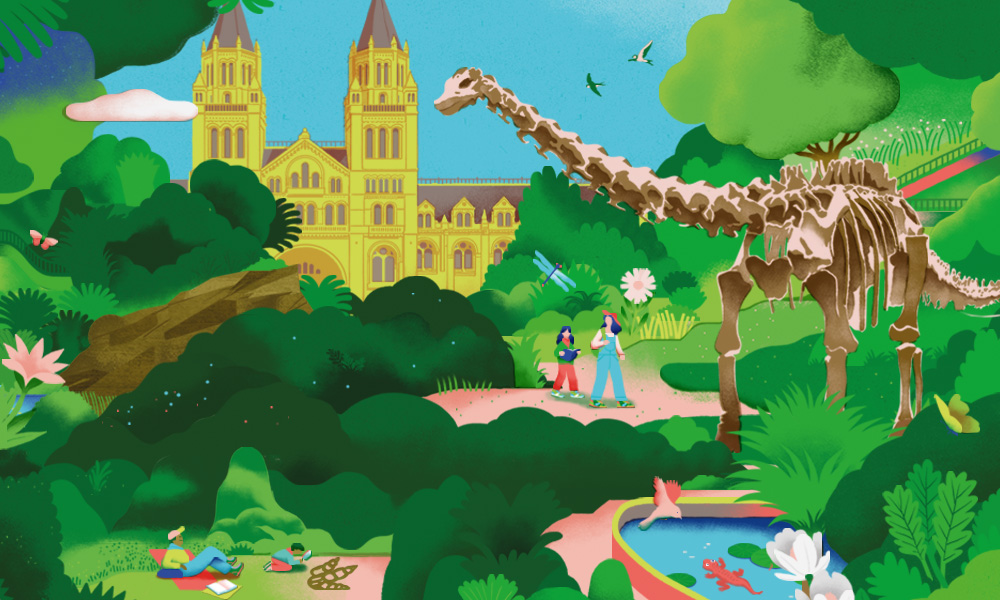
Visit our new gardens
Our gardens follow the story of how life on Earth has changed over time, from the days of the dinosaurs through to today.
Open daily
Nature Recording Hub
Discover how to record the wildlife in your urban environment.
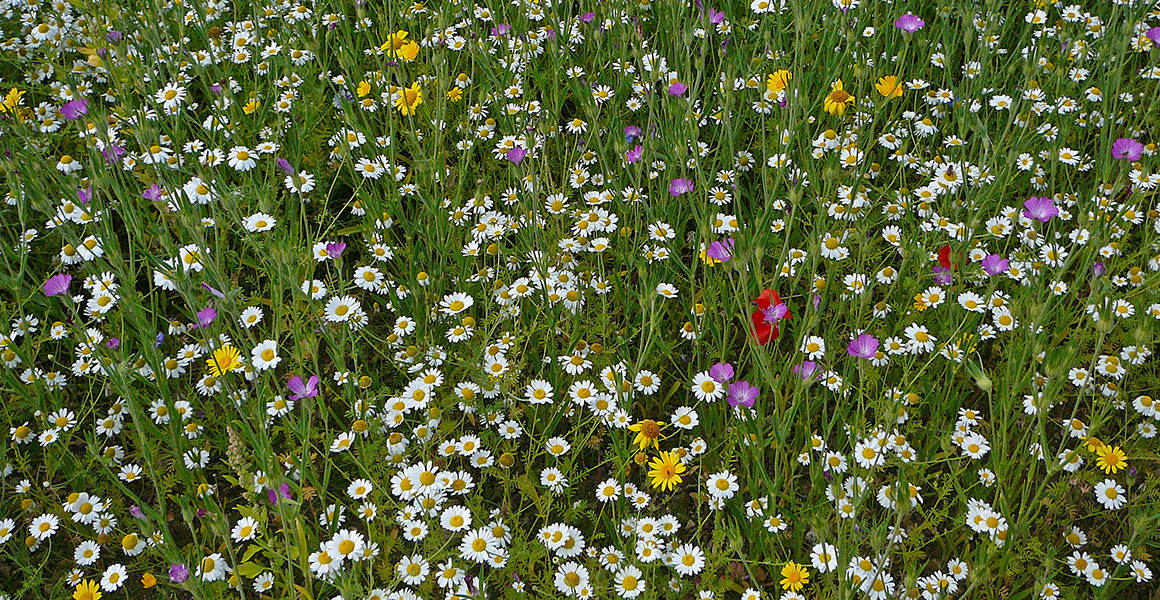



Don't miss a thing
Receive email updates about our news, science, exhibitions, events, products, services and fundraising activities. We may occasionally include third-party content from our corporate partners and other museums. We will not share your personal details with these third parties. You must be over the age of 13. Privacy notice.
Follow us on social media